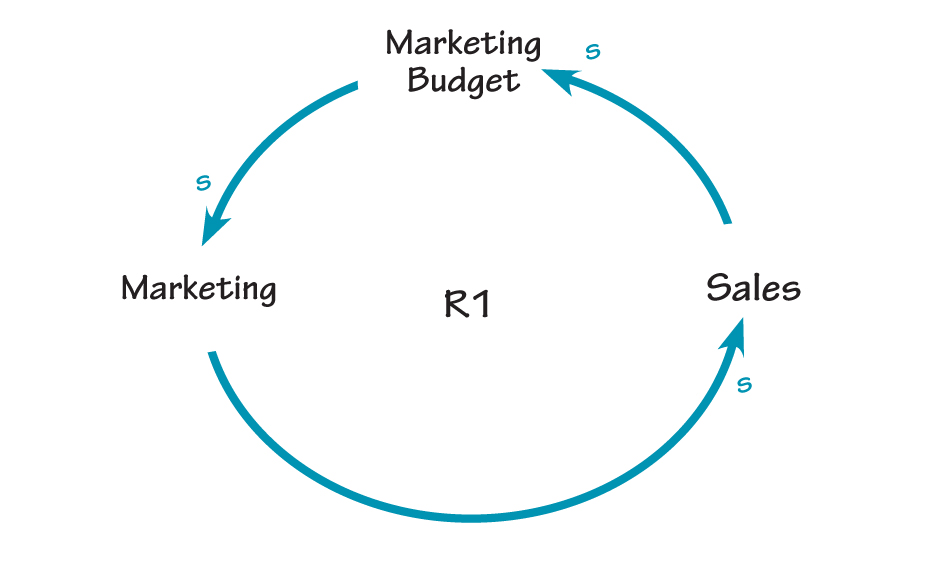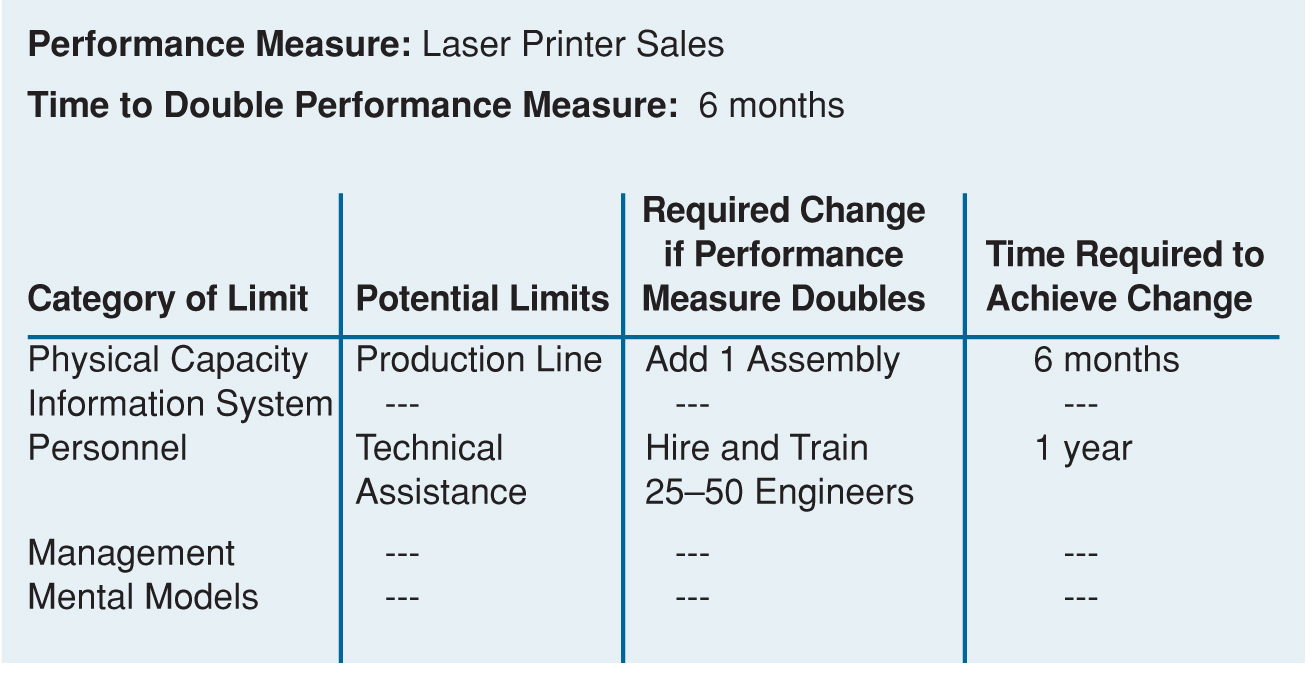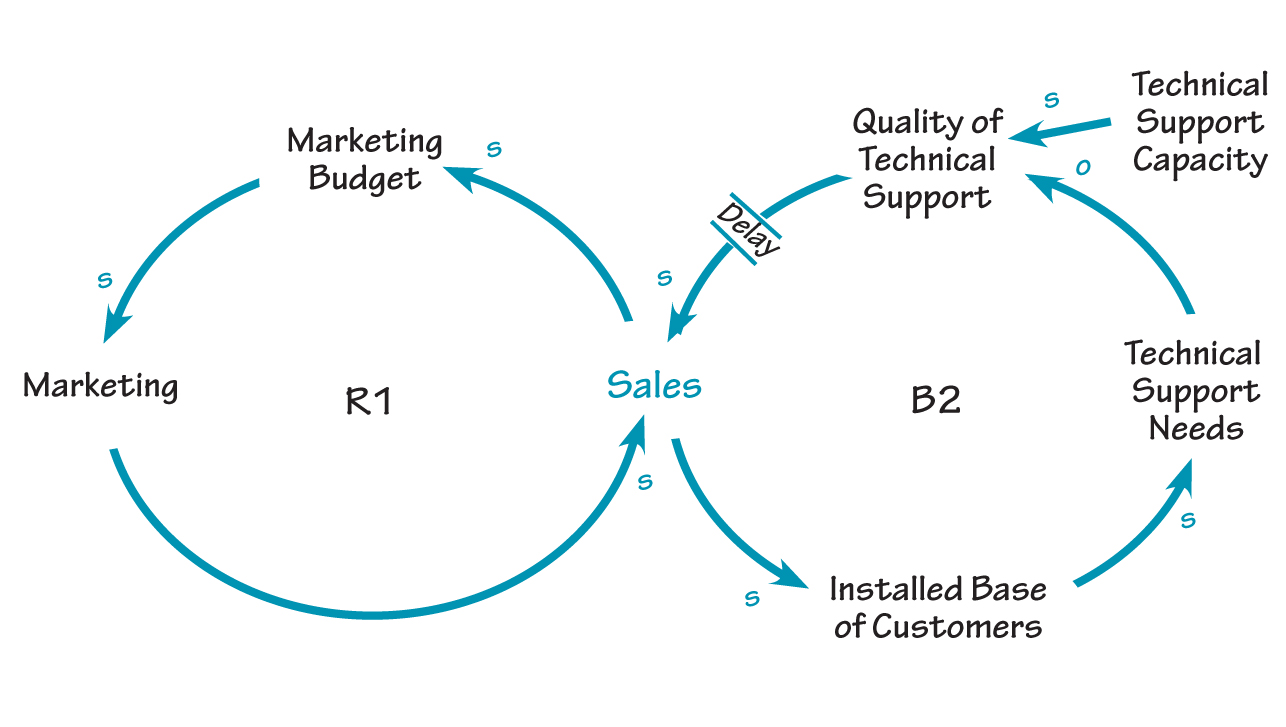Any successful product or company begins with a plan for achieving success. But oftentimes people are better prepared for dealing with failure than for dealing with success. Even though a plan may project healthy growth, we are generally much better equipped to deal with one quarter of the expected demand than if we get four times what we expect.
The “Limits to Success” archetype shows that being successful can be just as dangerous to longterm health as being unsuccessful (see “When the ‘Best of Times’ Becomes the ‘Worst of Times,’” Dec. 1990/Jan. 1991). Even success can sow the seeds of failure by stressing and overburdening the current system. Success can also trap us in a mentality of “what worked in the past will continue to work in the future.”
TEAM TIP
Take into account the factors that may limit your organization’s success.
The heart of a good planning process is really in understanding the implications of achieving one’s strategies for success. When used in a planning process, the “Limits to Success” archetype can help show how actions, whether intentional or unintentional, may end up reinforcing themselves and taking on a life of their own. It can also assist in the search for organizational barriers that growth may begin to engage.
Below is a seven-step process for using “Limits to Success” to help identify your engines of success and how they may trigger a process that can potentially lead to failure. By mapping out these structures in advance, you can anticipate future problems and eliminate them before they become a threat.
1. Identify the Growth Engines
GROWTH ENGINE

Identifying the “engines” we commonly use to drive growth—such as marketing—can reveal our implicit assumptions about what we believe increases sales (R1).
The first step in using the “Limits to Success” archetype is to identify the growth engines. Although the growth in “Limits to Success” is usually described with a single reinforcing loop, this loop can represent any number of reinforcing processes that fuel the initial success. Start by drawing one loop and then identify additional reinforcing loops that are relevant.
In this process, it is important to focus on dynamic behavior; that is, identify growth loops, not just growth factors. This will help emphasize the process that is feeding back and regenerating itself. Oftentimes this reinforcing process is linked to our own mental models, leading us to continue taking actions in a particular direction. For example, a laser printer manufacturer may have found that marketing efforts have a strong effect on sales, so they always resort to marketing to boost revenues (see “Growth Engine”). Implicit in that loop is a strong bias toward using marketing to address revenue problems.
2. Determine Doubling Time
The next question to ask is: what is the projected time for our results to double in magnitude? That is, if marketing efforts continue (at a certain percentage of sales, for example), how long will it take for laser printer sales to double? Asking questions about doubling time will help make time horizons associated with the rapid growth explicit, especially where new products or markets are involved. If it is a more established product, finding the time it takes to increase sales by 25% or 50% (or to produce another result) would be more appropriate. The key is to pick an outcome which, if achieved, would outstrip your current capacity.
3. Identify Potential Limits and Balancing Loop(s)
At this point, it may help to categorize the limits in order to explore the many possible side-effects of success (see “Planning for Limits”). If sales double (or increase by 25% or 50%), for example, what sort of limits would we encounter? Some possible categories:
- Physical Capacity—If we double sales, will we need to build a new plant or make capital equipment investments?
- Information Systems—Are current information systems capable of handling twice the current activity?
- Personnel—Will we have enough people to handle double the workload? If not, do we have a plan for hiring and training new people?
- Management Expertise—Will we outstrip our capabilities as an organization to manage the demands such growth will pose?
- Attitudes/Mental Models—Will our actions meet a limit that is imposed more from a worldview than from any physical capacity (i.e., will we run up against sacred cows)?
These categories extend from the most tangible to the least tangible. While capital equipment needs are relatively easy to assess, necessary management expertise and the required shift in mental models may be more difficult to identify.
PLANNING FOR LIMITS

Drawing possible balancing loops helps to begin identifying potential limits in advance. Categorizing the limit can help determine the appropriate course of action for removing it. The categories can also serve as guideposts for what to look for as you begin to grow, while helping you anticipate how quickly you can respond to the potential limits.
In the case of the laser printer manufacturer, doubling the sales of a high-end laser printer with advanced features may mean greater demand for technical assistance. If the company is not prepared for this increase in volume, it could limit future sales growth as customers receive poor technical assistance and look for a supplier with better service (see “Capacity Limits” on p. 8).
CAPACITY LIMITS

A large increase in sales of a product may require more technical assistance for customers. If we are not prepared to make the required investments of time and money to remove that limit, it could hurt future sales (B2).
4. Determine Required Change
The next step is to assess what changes are required to deal effectively with the limit(s) identified. In terms of personnel, for example, technical assistance needs could be assessed by exploring questions such as: If sales double, will we get more sophisticated users, or less? How reliable is the product compared to previous ones? We can then begin to estimate how many people will be needed and what training is required in order to maintain (or improve) the current level of service.
5. Assess Time Needed to Change
If sales can double in six months, and you’ve determined that you need to add 20 to 30 new technical support people, what is the actual time frame in which you can accomplish that while still maintaining the desired level of quality? You may find it will take a full year to hire and train the necessary people. If there is a discrepancy between the doubling time (six months) and personnel expansions (one year), you may run into a “Limits to Success.” If you are able to identify the time needed in advance, however, you can plan for those needs and avoid a “Limits to Success” trap.
6. Balance the Growth
Once we have determined both the engines of growth and the potential limits, we need to consider how to balance the two processes. One way is to ask questions such as: Are we capable of investing enough in the capacity that is required to sustain the growth? If not, will we choose to somehow balance the growth ourselves, or are we going to let the forces of growth choose for us? Look for links between the reinforcing and balancing loops that will enable you to manage the balance between the two, rather than just react to changes. If the laser printer company discovers they cannot hire technical assistance fast enough to meet the demand, they can choose to balance sales growth with the capacity to service that growth. A link between quality of technical support and marketing budget may be appropriate.
7. Reevaluate the Growth Strategy
Even if a strategy is highly successful, we should always be open to questioning whether or not we should continue pursuing it. Reinforcing processes have their own momentum that can propel us toward continually pushing on the engines of growth. Reevaluating the growth engines and viewing the plan in a broader context of overall company strategy can curb our propensity to pursue undifferentiated growth.
There’s an old saying that goes, “Be careful what you wish for; you just might get it.” Unfortunately, getting what you wish may not give you exactly what you want over the long term. Companies can become so focused on preventing failure that they neglect planning adequately for dealing with success. The “Limits to Success” archetype can, however, help us ask the right questions to sustain our hard-earned success rather than be limited by it.
Daniel H. Kim is co-founder of Pegasus Communications, founding publisher of The Systems Thinker newsletter, and a consultant, facilitator, teacher, and public speaker committed to helping problem-solving organizations transform into learning organizations.
